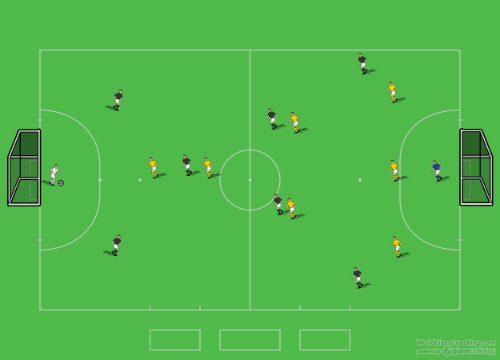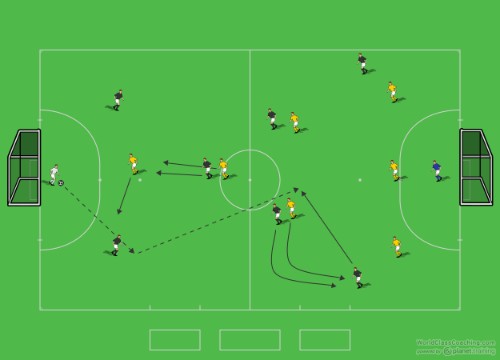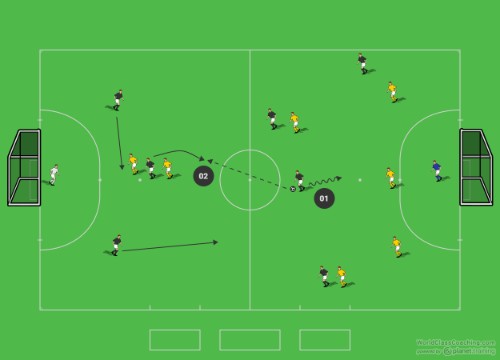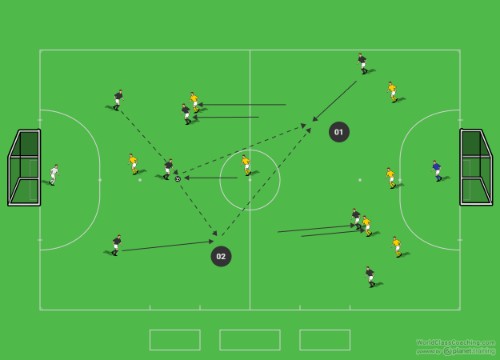By Sean Pearson
Area Size: Half Field
Teams: 20 mins
Players: 8 v 8
Objectives
- To make the center of the field big to spread the player out.
- To manipulate the man marking players away from the ball.
Set-Up
Two teams, the team you are working with is to be set up in a 2-1-2-2 (to replicate a 3 in midfield) against a 3-2-1-1.

Execution
Occasionally you will come up a team in youth soccer that their defensive organization is to man mark your central midfielders. This is because it is the easiest form of defending that necessarily doesn’t involve any coaching. The coach just tells the player to follow their counterpart. Is it effective? Yes. Is there a time and place to go man to man? Yes. Should you do it all the time? In my opinion, no.
The good thing about man to man when defending is your players are close, however if the opposition players spread out and move in a way to combat the man marking it becomes a problem for the defending team. This is what I will talk about in this article, how to manipulate the players who man mark.
It is important that when playing out from the back that your 3 midfielders start in high positions. This will allow the CB’s more time and allow more space to move into. With a 3 v 1 at the back, which is usually what happens with today’s preference of the 4-3-3 or 4-2-3-1 formations, your defenders can move the ball away from the single striker.
When the CB looks up, the defensive midfielder (#6) drops into the space, the attacking midfielder on the CB side with the ball rotates with the wide player, who stars high and comes down and in. Because the defending midfielders are man marking they follow these players and space is created.

As the wide player receives the ball they can either (1) turn and drive with the ball if there is no pressure behind them or (2) the can set the ball back to the #6, who has run behind the player marking them as they look at the ball.

If/when the midfielder doesn’t go with the defensive midfielder as they drop the CB now plays the ball to them. The attacking midfielder on the ball’s side drops down and the attacking midfielder on the opposite side moves up the field. This creates space for the wide player to drop in to and the CB to move up in to. The #6 can then choose which option is best to play depending on the movements of the defending team.

Variations
- Use different formations
- Have the team’s flip when the ball goes out for a goal kick
By Sean Pearson. Sean is also the author Coaching Team Shape in the 3-3-1, Coaching Team Shape in the 4-2-3-1 and Coaching Team Shape in the 4-3-3


